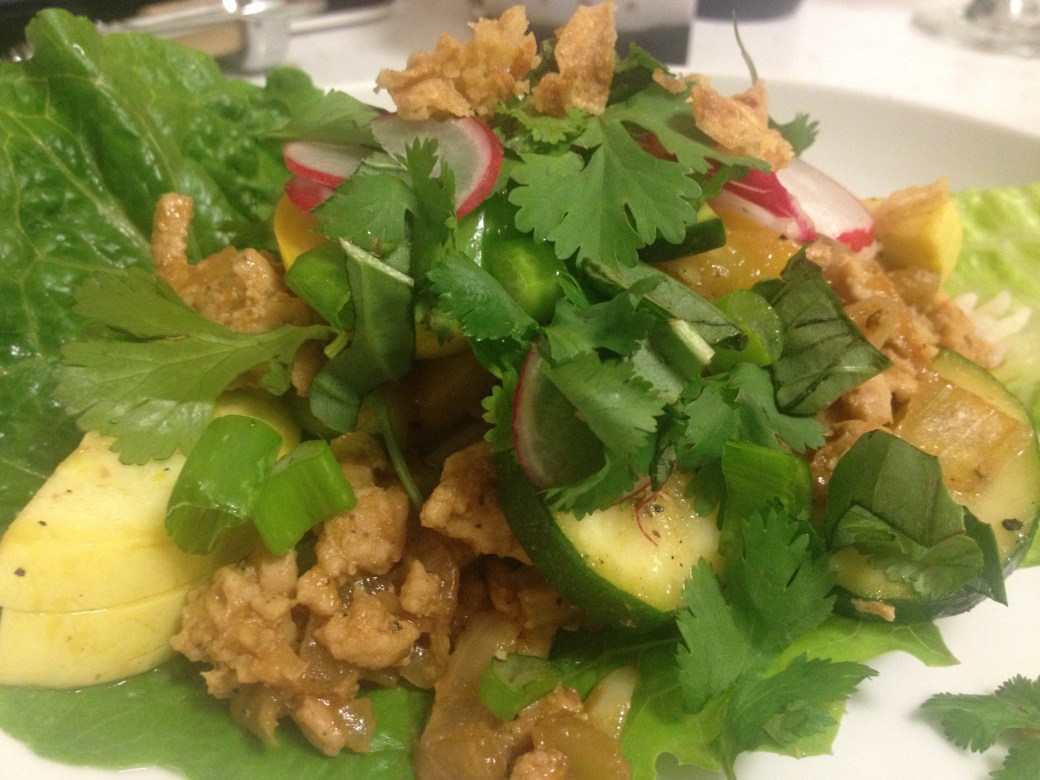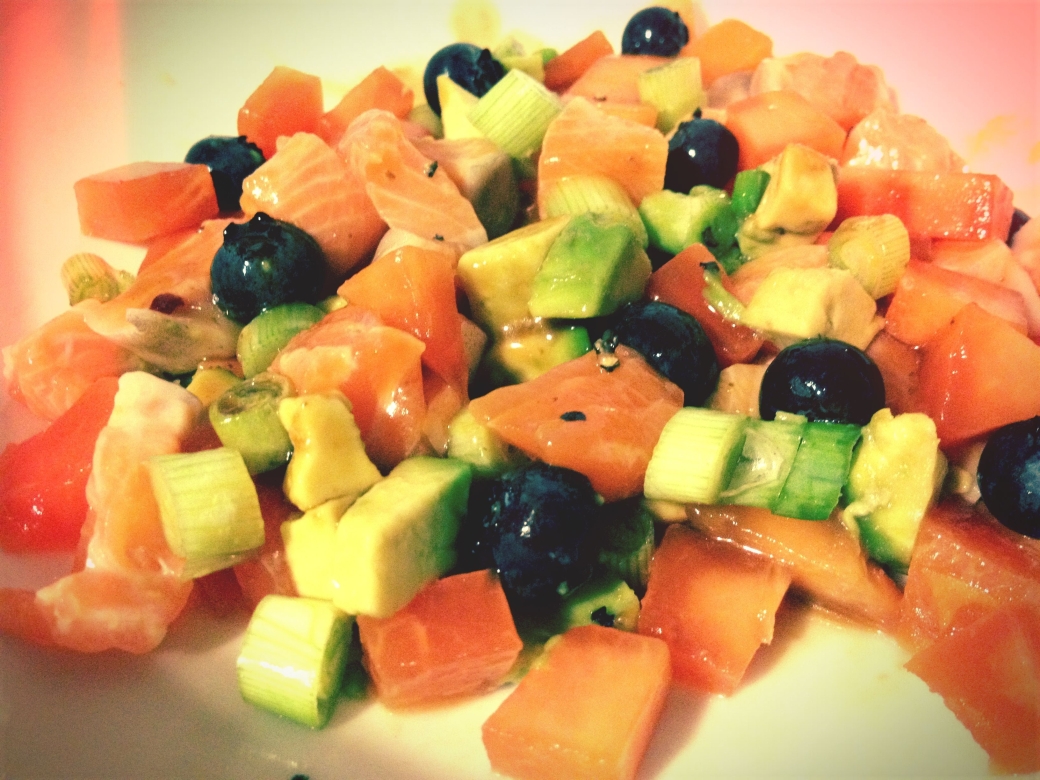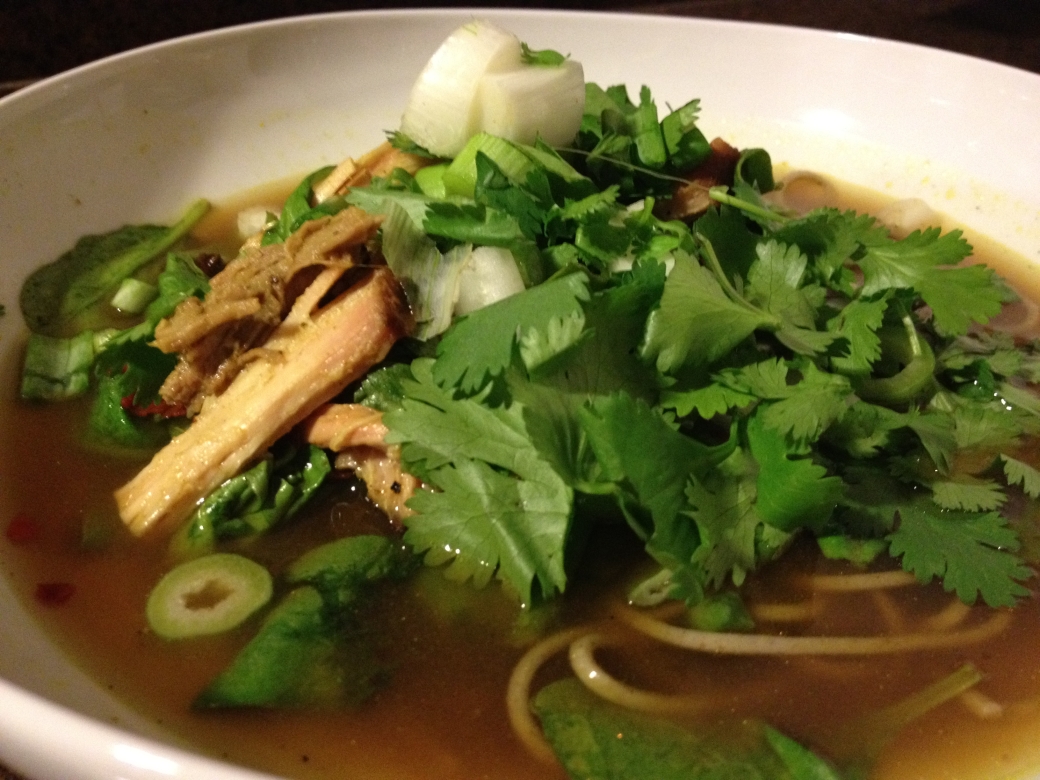Some people claim, “I do not care for Asian food.” That’s plain absurd. When I hear that asinine statement, I find eye-rolling to be the best evasive tactic for knocking sense into the commenter with a wok. Simply put: if you don’t like Asian food, I don’t like you (and I think you might kick babies for fun). Asian food hits the mark on nearly every check list: flavorful, cheap, filling, comfort, exotic, depth and complexity of flavors, healthful, vegetable filled, quick cooking, and so on and so on. Most importantly – nearly every ingredient in most Asian dishes (minus meat and noodles/rice) is a CANCER FIGHTER. Good food that fights all the bad shit carcinogens that we cannot help but stuff our faces with in the West? In!
Rant over, for now. Laab is a dish that fulfils all the aforementioned criteria of why Asian food is awesome. Laab is a Loatian dish (Thailand has a version as well) that is nothing short of a damn miracle on a plate. Traditionally, it is made with some animal variety (bawk, quack, oink) – minced or ground – cooked with traditional Asian ingredients. I’m partial to making a huge batch and using it in different applications or freezing it (because I have leftovers so often). I like to make lettuce wraps with lots of crunchy veg on top and serve it with a generous variety of toppings and sauces. You can use whatever meat you desire: pork is most flavorful but least healthful (pork actually has very little nutritional quality), chicken or turkey will be most waist-and-other-diet friendly. I believe I used ground turkey and ground chicken thighs and I did not hear any complaints. The beauty of this meal is that you can indulge and feel damn healthy doing it.
I typically add yellow squash and zucchini to up the nutrition factor. The combo you are trying to achieve is a salty-sweet-spicy-acidic combo that perfectly blends each element yielding a balanced bite that offers depth of flavor. Use your palate and add more sugar if you added too much fish sauce, take down the heat with less jalapeños (I personally prefer to use very little jalapeños in lieu of Sriracha) or give it some extra acidity.
Laab
Serves 4-8
Two pounds ground pork, chicken or turkey (or a combo or these)
Three Garlic Cloves, finely minced
Two shallots, finely minced
One Yellow Squash, halved and sliced
One Zucchini Squash, halved and sliced
One Jalapeño, seeded and minced (reserve one quarter unminced for garnish)
Two tablespoons Fish Sauce
One tablespoon Hoison Sauce
Good pinch of brown sugar
Juice of one lime (lemon can work as well)
Decent squirt of Sriracha
One tablespoon vegetable oil (hot chili, sesame and grapeseed oil also work)
Half-cup chopped cilantro
Half-cup chopped mint
Half-cup chopped basil
Salt and freshly ground pepper
One head of lettuce (Boston, Romaine or Butter are my favorite), separated into leave
Garnish
Veg: Paper thin Radishes, Julienned Carrots and Julienned Cucumbers
Herbs: Mint, Basil, Cilantro
Sauce: Hoison, Soy, Sriracha
Chopped Peanuts
Lime Wedges
Jalapeños sliced very thin
In a bowl, mix the ground meat, garlic, shallots and minced jalapeño. In another bowl, combine a lime juice, fish sauce, hoison sauce, brown sugar and Sriracha and mix well. Heat the oil to medium heat in a large skillet and add squash (if using), lightly salting them. Let them cook about three minutes and remove from skillet. If more oil is needed, add and let heat. Once hot, add the meat mixture and brown over a high heat – stirring to break the mass up. Cook about five minutes or until there is no longer any pink remaining in the meat. Turn heat off, and add the the liquid mixture, the squash and zucchini and herbs to the pan. Mix well then let it all soak in for a few minutes – adjust any seasoning as you wish (and add salt and pepper). Let stand for 5 minutes. Transfer the meat to a bowl; stir in the herbs. Season with salt and pepper. Prepare the garnish platter of lime wedges, hoison, Sriracha, soy sauce, sliced radishes, julienned carrots and cucumbers, fresh mint, basil, and cilantro, crispy shallots, Jalapeños and peanuts. Serve with lettuce as a build your own lettuce wrap.







You must be logged in to post a comment.